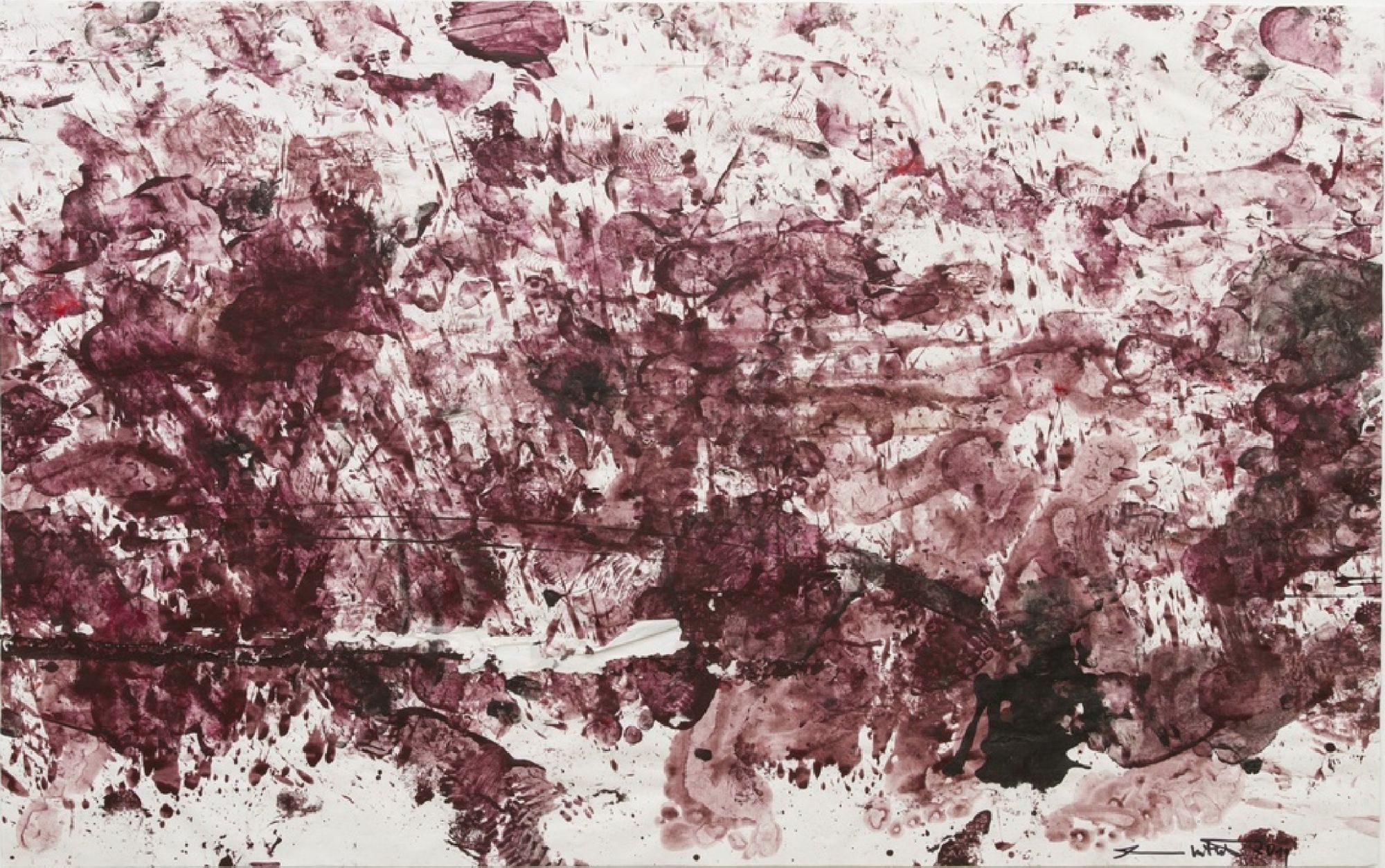artist / participant
press release
The 70th Action Painting Vienna Nov 19, 2014 at Galerie Elisabeth & Klaus Thoman in Vienna resulted in a number of sumptuously pastose, dark red pictures. The four largest of them were shown in April 2014 in Çanakkale, Turkey, in the exhibition Hermann Nitsch memorial against the war. A small group of works on paper are now presented at Galerie Elisabeth & Klaus Thoman in Innsbruck.
Action painting, according to Hermann Nitsch, is the visual grammar of action theatre on a picture plane. Preparation for the 70th Action Painting. The floor of the gallery is being covered in sheeting and drop cloth. White sheets of special watercolour paper are then spread on top. Nitsch is giving instructions. He wants the whole floor to be covered in paper. Then the prepared canvases are laid out edge to edge, like large puzzles, to form two rectangles. There remain only narrow paths, around them and in between. Josef, the artist's assistant, prepares the paints in a dozen buckets and trays. Nitsch is watching the process closely, decides on the colours, the sequence, the viscosity. The sound of stirring, the clatter of utensils, Nitsch's whistling. The whistled score of his upcoming concert in Mexico City formed a constant musical backdrop to these days of preparations and the 70th Action Painting itself.
Josef helps Nitsch slip into his painting shirt. Silence. The rhythmic splashing of watery thin paint on the canvases. The artist, sitting down, is passing out instructions as to how much is poured where, as to how to spread the paint with what size brush. The next day, Judith joins in the action. Thick oily painting mass is being applied. Barefoot, on their knees, and with bare hands, Josef and Judith are spreading it like children smearing mud. Suddenly everybody wants to join in – the students from the Graphische, who are allowed to take pictures, the gallery assistants, the technicians. Nitsch doesn't mind, continues giving instructions. Then, careful with the painting papers along the paths! Nitsch himself wields the painting brush, chooses bright red paste, which Judith and Josef work in where the artist tells them to. Silence setting in, the only sounds the squelching of the paste between Judith's and Josef's fingers and the slapping when they spread a handful of it. And Nitsch whistling.
The exhibition thus emerging keeps changing permanently. Wet, large pictures remain lying on the floor, others are being varnished, signed. Later the large ones are hung, the paper works selected, cut out, signed, photographed, their framing discussed. Only when the exhibition is dismantled, the last paint buckets are taken away, the paint-splatter on the walls whitewashed.
When something is new not only the artists have to work it out but the recipients as well. It is a learning process for us all. For the artists, they have to do everything, and for the art enthusiasts, but they too have to learn to perceive something new. Which is quite natural. (Hermann Nitsch in conversation with Klaus Thoman on the occasion of the exhibition Hermann Nitsch Levitikus at Galerie Elisabeth & Klaus Thoman Innsbruck in 2012)
